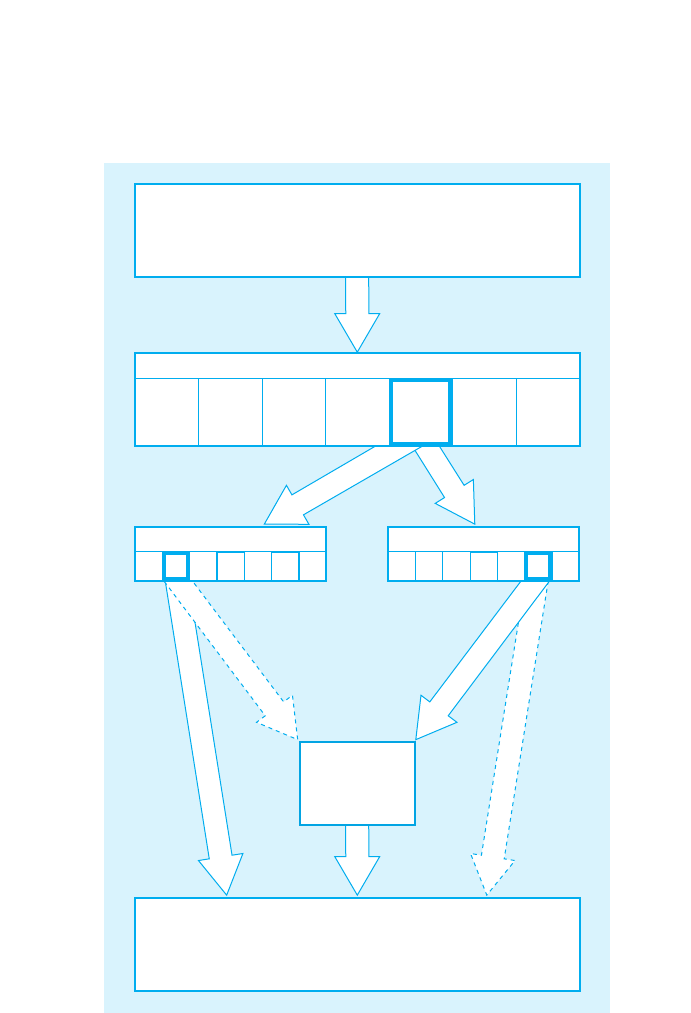
POLICIES, RULES AND PROCEDURES 325
Policies, rules and procedures
All of us follow certain set rules and procedures. You put on your shoes before you tie your
laces (theoretically, anyway). You buy a ticket before travelling on the underground, subway,
metro, whatever you call it. Many of these things we learn by rote with coaching from a
patient parent. Other routines we pick up deliberately or unconsciously from experience.
It is just the same in business. In your office, the last one to leave at night probably car-
ries out the following procedure.
1 Checks that windows and secondary exit doors are secure.
2 Checks that everything that should be locked away is locked away (confidential
papers, cookies and biscuits).
3 Checks that everything that should be switched on is on (fax and telephone
answering machine).
4 Checks that everything that should be switched off is off (coffee machine, lights).
5 Sets the security alarm.
6 Exits and locks the door.
This is an example of a standard operating procedure. It might be undocumented. Or you
might have made it into a little check-list and pasted it on to the wall by the door or put it
into a big ring binder of procedures.
Formal business plan
Other plans, etc.
It all depends where
you draw this line
Strategy
High-level
operating
plans
Detailed
operating
plans
Action
Results
Figure 13.4 Drawing the line

326 CHAPTER 13 NOW MAKE IT HAPPEN
Action
Strategy
Standard
operating
procedures
Standing plansSingle-use plans
Operating plans
Figure 13.5 Getting to the action
This illustration shows how action flows from strategy.
The blue background represents policies and rules:
– Policies evolve from strategy, planning and activity.
– Policies lead to the development of rules, which themselves influence strategy,
planning and action.

POLICIES, RULES AND PROCEDURES 327
You will document all of these in varying degrees – keep them simple. Manifestations of
policies, rules and procedures that are possibly already on your company bookshelves
are listed opposite. You might want to make a list of handbooks and manuals that would
guide decision-making and activities in your business. It might be much shorter than the
list shown. Or it might be much more complex. (You could develop a plan for creating
these documents.)
A warning:
‘A person who is devoted to paperwork has lost the initiative. He is dealing with things
that are brought to his notice, having ceased to notice anything for himself. He has been
essentially defeated in his job.’
PROFESSOR C. NORTHCOTE PARKINSON
It is a delight to be able to generate standard policies and procedures. In particu lar, get
the procedure right, do it the same way every time, and the result is always consistent and
as expected. This applies equally to processing customer orders, setting up manufactur-
ing equipment, approving credit applications, etc.
Procedures make it easier for the next person, simplify staff training, are the basis for
quality systems (such as promoted by the international standards organisation ISO) and
– most important – help you please the customer. They do not, as human-resources-
Luddites might suggest, take away employee dignity or creativity. Quite the opposite,
procedures are the underlying framework that free resources for better things and – as it
happens – create stability and consistency as a basis for standards and the ultimate repu-
tation of your business.
We do not need to discuss this much further. You have probably spotted where I am
heading. The finest business plan would be one that could be taken to the point where
instructions it contains are phrased in terms of follow procedure A, B, C, etc. You really
could play golf all day if your business was this well planned. Or at least, you could once
you had decided who would execute the procedures.
Procedures develop from your business plan in the following way.
1 Set policies that guide activities – someone has to lock up at night.
2 Develop rules – the last person to leave will set the alarm.
3 Create procedures – such as shown in the six steps above.
..................Content has been hidden....................
You can't read the all page of ebook, please click here login for view all page.
